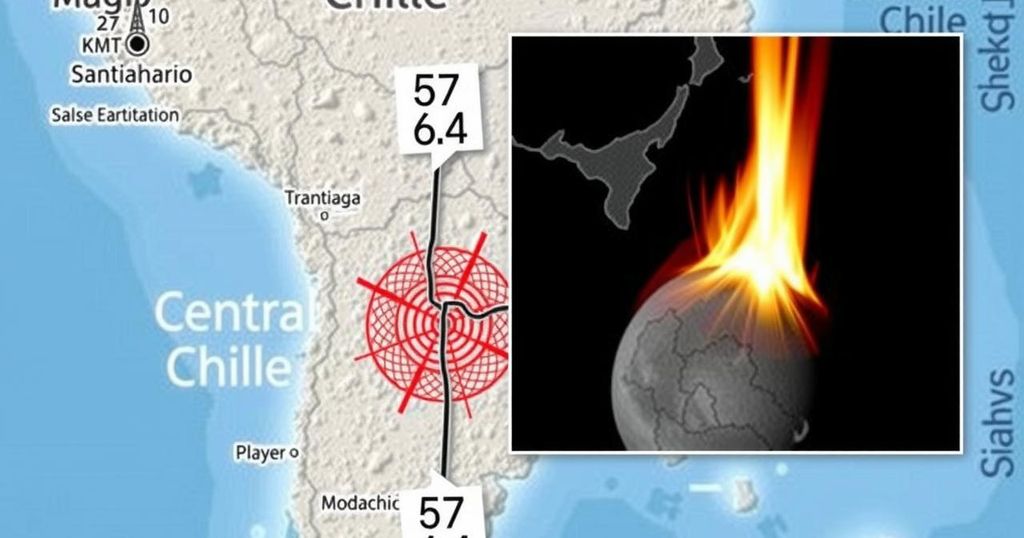6.4 Magnitude Earthquake Hits Central Chile; Tremors Felt in Santiago

On Friday, a 6.4 magnitude earthquake struck central Chile, affecting Santiago and the Maule region. The quake, recorded at a depth of 100 kilometers, highlighted Chile’s vulnerability due to its location in the “Ring of Fire,” which is known for high seismic activity.
On Friday, a powerful earthquake measuring 6.4 on the Richter scale struck central Chile, resulting in seismic tremors that were felt in the capital city, Santiago, as well as in the surrounding areas of the Maule region. The earthquake, as reported by the United States Geological Survey (USGS), occurred at a depth of 100 kilometers (approximately 62 miles) beneath the Earth’s crust, which contributed to its widespread effects across the region.
The tremors were perceived across a broad area of central Chile, reaching as far as Molina and the capital. The considerable depth of the earthquake, confirmed by the European-Mediterranean Seismological Centre (EMSC), indicates that the seismic activity was situated deep within the Earth’s crust, thus leading to notable damage throughout the affected regions.
Chile’s geographical positioning along the “Ring of Fire” means that it is no stranger to seismic occurrences. This area, characterized by a horseshoe shape, encircles the Pacific Ocean and is responsible for an overwhelming majority of earthquakes globally. This seismic belt is particularly active, accounting for a remarkable 75% of the planet’s volcanism and 90% of its earthquakes.
Chile has a long history of seismic activity, with records noting over 10,000 earthquakes of magnitude 4 or higher within a distance of 300 kilometers from its borders in the past decade alone. On average, the nation experiences approximately 85 earthquakes monthly, translating to around 1,026 earthquakes annually, with significant seismic events occurring every eight hours.
The ‘Ring of Fire’ is noted for its high levels of geological activity, making it a critical zone for earthquake research and preparedness. Its vast stretch extends from the southern reaches of South America, runs up the coast of North America, crosses the Bering Strait, and proceeds through Japan before reaching New Zealand. This geographical alignment accentuates the likelihood of significant seismic events, particularly in countries like Chile, which is situated along this active belt. Seismologists and geologists closely monitor seismic activity in this region to better understand the patterns and potential hazards associated with earthquakes.
In summary, the recent 6.4 magnitude earthquake that rocked central Chile underscores the country’s position within the seismic risk-laden “Ring of Fire”. The depth of this earthquake contributed to the wide-reaching tremors experienced across central Chile, including the capital city of Santiago. Given Chile’s historical context of frequent earthquakes, monitoring and preparedness remain critical to safeguarding lives and infrastructure in this geologically dynamic region.
Original Source: www.newsx.com








